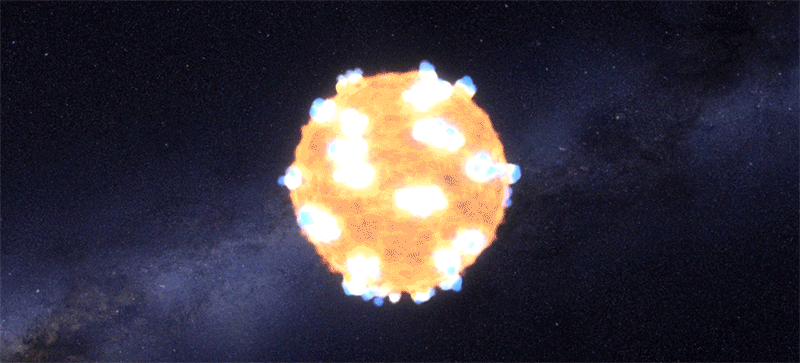
For the first time in astronomical history, the majestic explosion of a dying star was captured as optical light, giving us a unique perspective of the shockwave released when a star supernovas. The unprecedented event was discovered as the Kepler space telescope scoured through over 50 trillion stars, observing 500 galaxies every 30 minutes. Three years elapsed before an international team of scientists led by astrophysicist Peter Garnavish of Notre Dame University in Indiana discovered the supernovae.
Supernovae occur when stars run out of fuel, leaving behind a core that’s untenable to sustain the combined weight of the entire celestial structure, causing the core to collapse in on itself. This creates a gargantuan explosion known as a Type II Supernova that spreads the star’s elemental makeup across the galaxy. The process takes a couple of weeks to execute fully, but is initially kick-off by a short, sharp blast of light known as the shock breakout; that occurs when the shockwave of the collapsing core reaches the star’s surface. It’s this event that the team observed.
The probability of catching a star at this exact moment is unfathomably low, which is why it took the team three years to comb through all the data and discover two such events that Kepler observed as far back as in 2011. During this time, the telescope caught sight of KSN 2011a, a red supergiant 300 times the size of our sun and 700 million light years away from Earth. A second red super giant called KSN 2011d was also spotted, this one 500 times the size of our sun and about 1.2 billion light years away.
“To put their size into perspective, Earth's orbit about our sun would fit comfortably within these colossal stars,” said Garnavich.
Although separated by vast distances of light years, the light burst from the shock breakouts last only 20 minutes, giving Kepler a small window of opportunity to spot the event once the light stepped into its range of sight. “To see something that happens on timescales of minutes, like a shock breakout, you want to have a camera continuously monitoring the sky,” said Garnavich. “You don’t know when a supernova is going to go off, and Kepler's vigilance allowed us to be a witness as the explosion began.”
Previously witnessed supernovae from smaller supergiants did not yield a noticeable shock breakout, possibly due to surrounding gas clouds obscuring the light. The two mentioned above matched the mathematical models for Type II explosions.
Source: NASA
Advertisement
Learn more about Electronic Products Magazine





